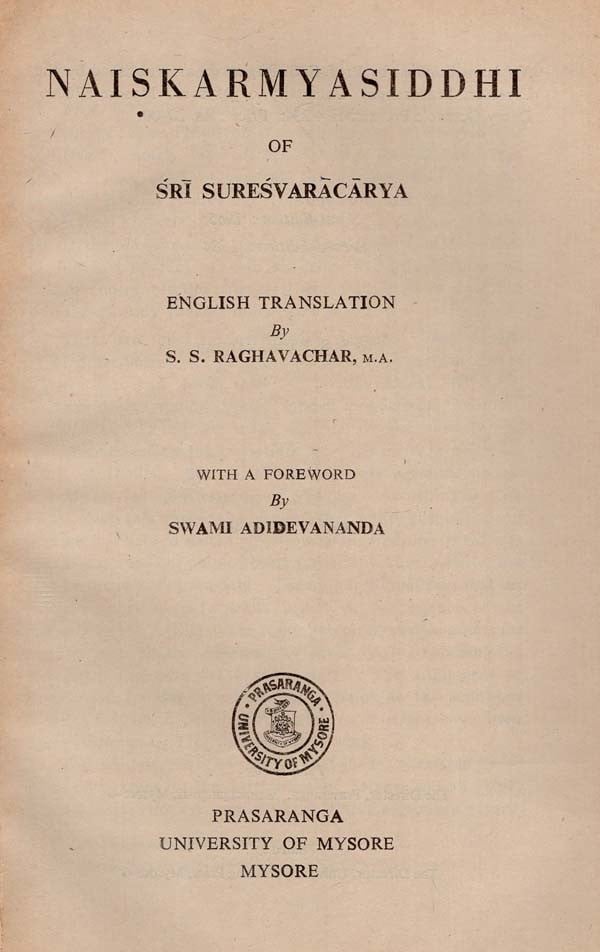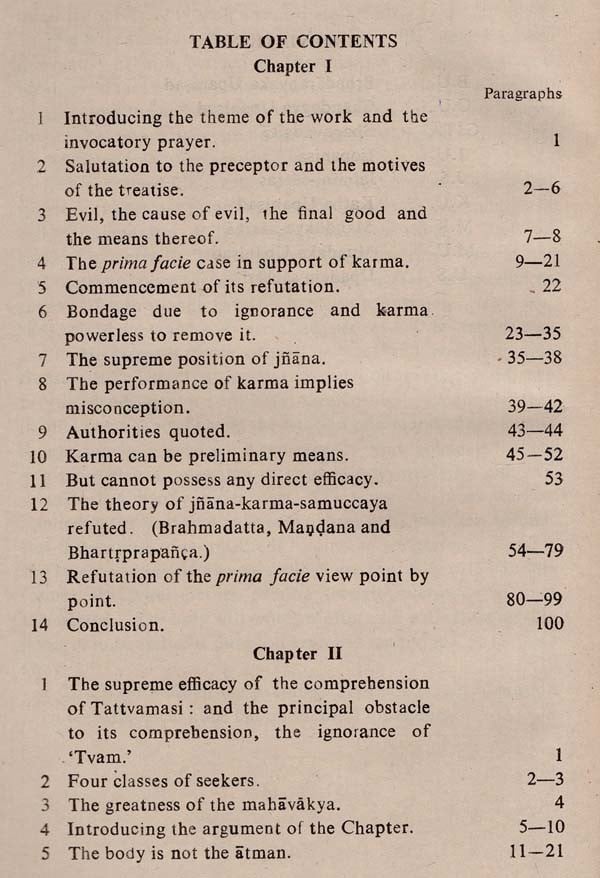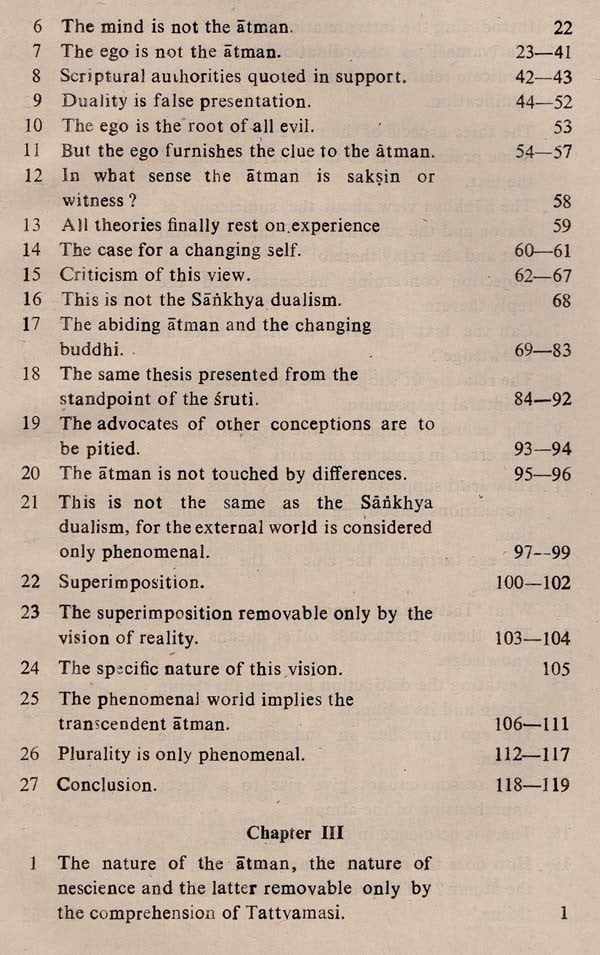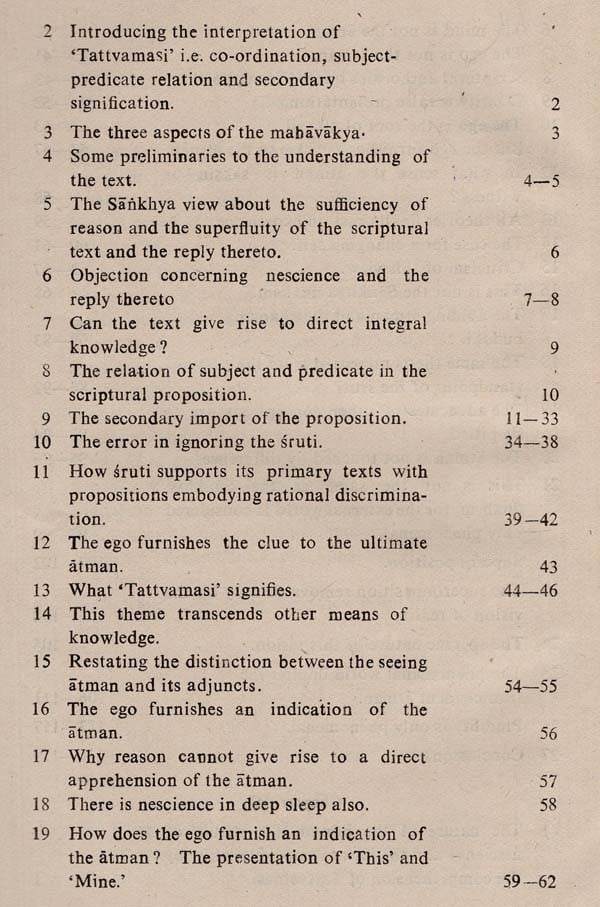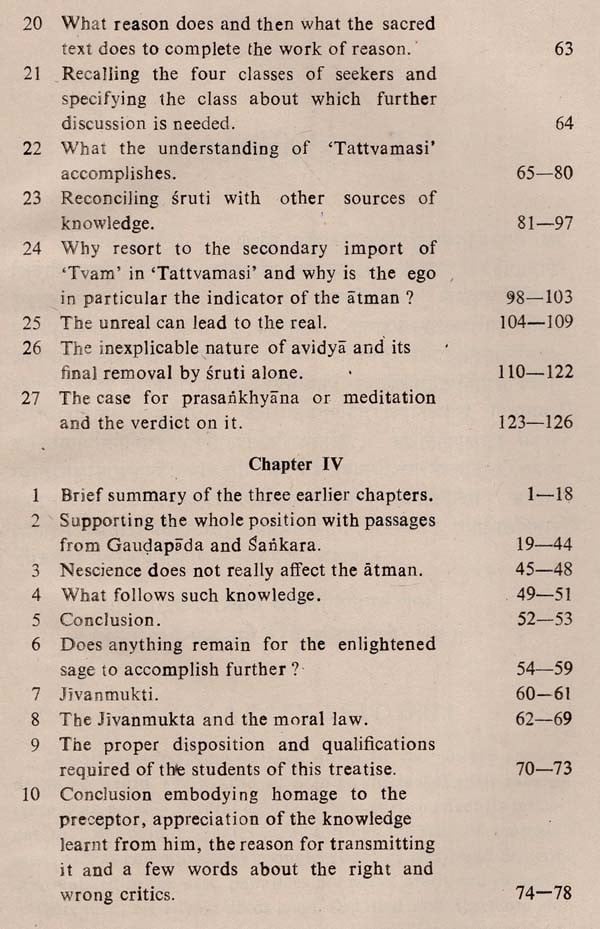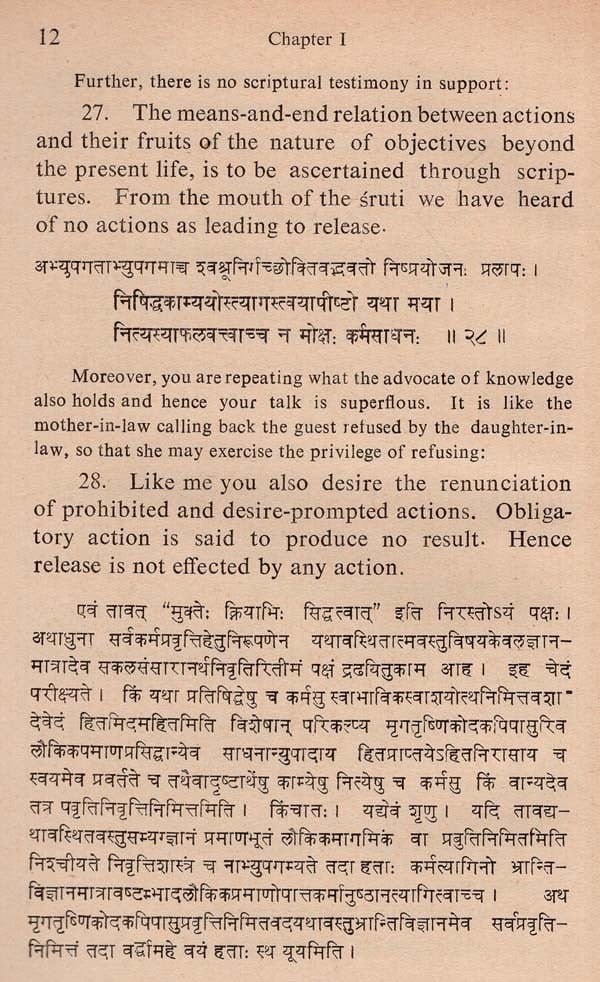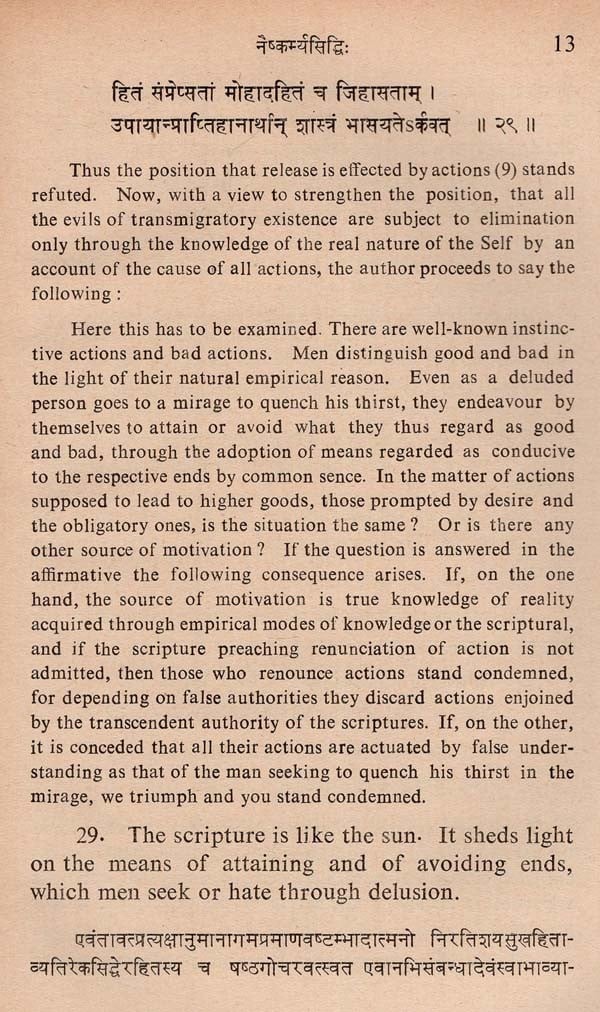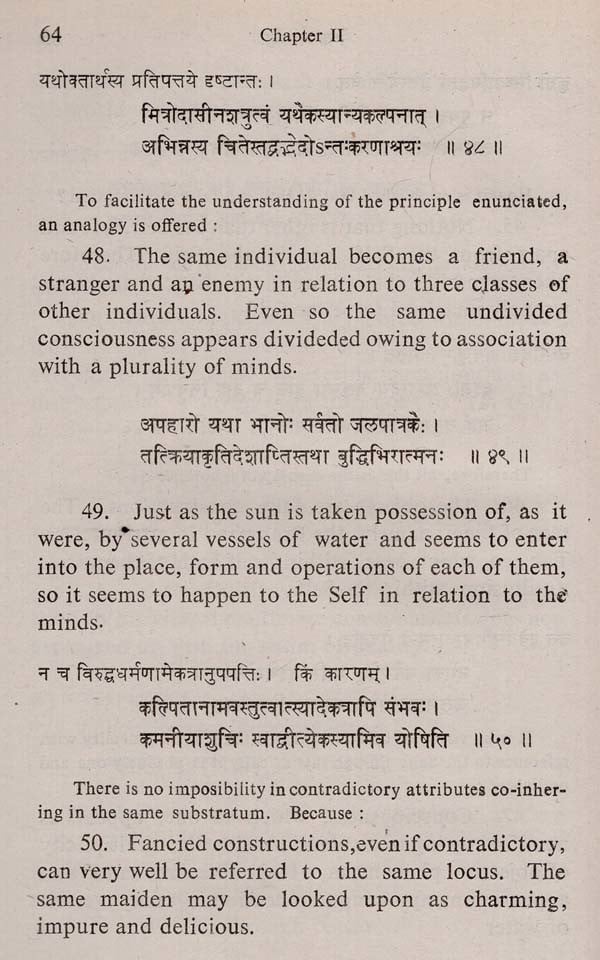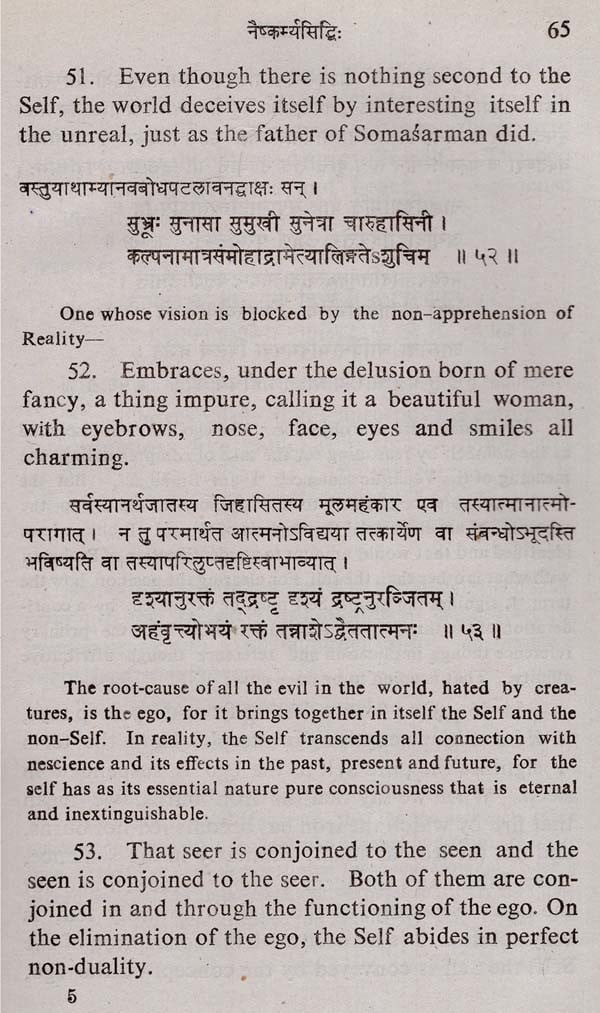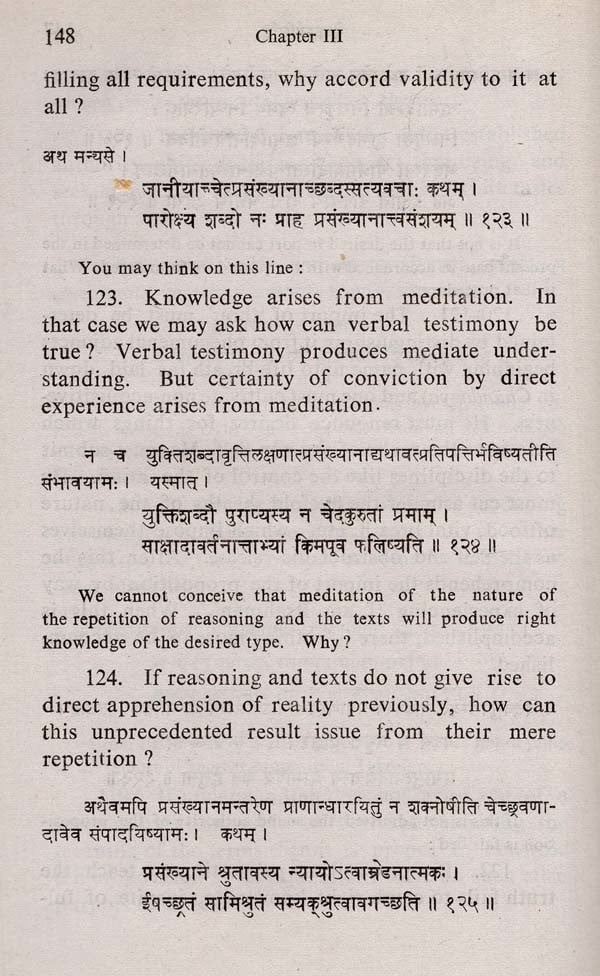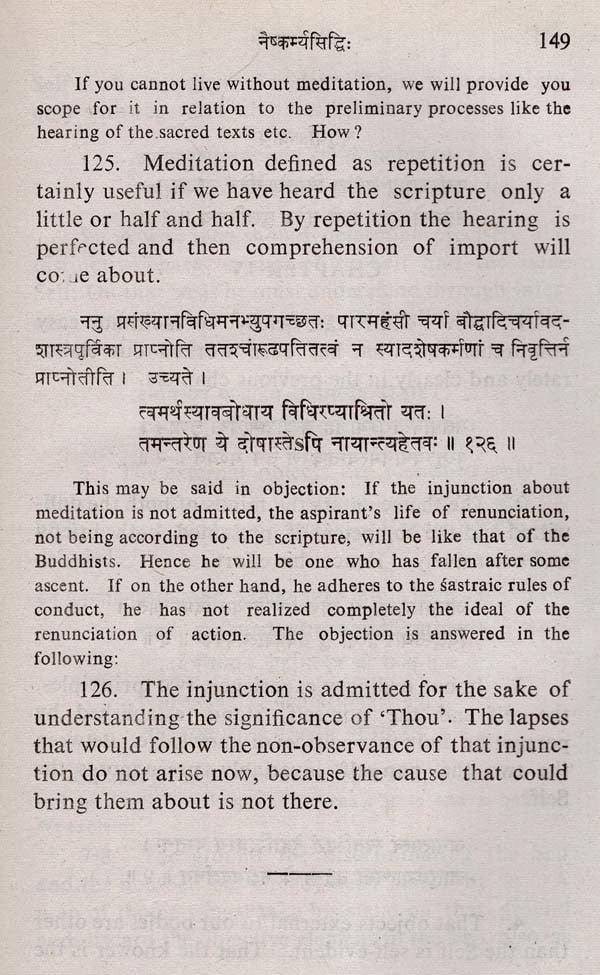
Naiskarmya Siddhi of Sri Suresvaracarya (An Old and Rare Book)
Book Specification
| Item Code: | AZE103 |
| Author: | S.S. Raghavachar |
| Publisher: | University of Mysore, Mysore |
| Language: | SANSKRIT TEXT WITH ENGLISH TRANSLATION |
| Edition: | 1984 |
| Pages: | 270 |
| Cover: | PAPERBACK |
| Weight | 270 gm |
Book Description
There: are four famous Siddhis in Advaita: Brahmasiddhi of Mandanamisra, Naiskarmyasiddhi of Suresvara, Istasiddhi of Vimuktatman and - Advaitasiddhi of Madhusudana. Of these, . Brahmasiddhi expounds a special type of pre-Sankara Advaita ; Istasiddhi works out the maya doctrine comprehensively and Advaitasiddhi refutes the objections of Nyayamrta, a polemical work of Dvaita. But Naiskarmyasiddhi is a shorter manual embodying the quintessence of Vedanta. According to Col. G. A. Jacob this work is the best of the author's productions.
The work is held in such high esteem in the tradition of Advaita that it is quoted not only by every important Advaita writer but also by the critics of Advaita. The author himself says that the work' purports to set forth the epitome of the essence of the entire Vedanta. The term, naiskarmyasiddhi occurs for the first time in the Bhagavadgita (xviii. 49). Explainmg the meaning of that term. Sri Sankara says: 'The attainment of naiskarmya, the state in which one remains as the action less Self. 't It is quite possible that this term might have been taken from the Gila for the title of the work.
The quintessence of this text is that joana, pure knowledge is the only means The author quotes seventeen times from the Upadesasahasri of Sri Sankara, not only to emphasize the views to his great master, but also to indicate the authenticity of the tradition.
Suresvara, apart from refuting the doctrine of the Mimarhsakas, has to join issue with three sri-sankara Dvaitins, namely, Brahmadatta, Mandanamisra and Bhartaprapagya. The value of the present work lies in the uncompromising position it takes with regard to sri-sankara Advaita. It not only distinguishes it.from the views of Sri sankara, but also refutes it without mercy.
Suresvara does not agree with the Mimarhsaka view that the nityakarmas (obligatory duties) could be the means to liberation for their performance has no significance for one who knows himself as the pure Self without a second (i. 96). Nor does he admit the view of the Prabhakaras that all significant propositions should refer to some action, for a word may signify an object unrelated to action.
Based on the commentary, Vidyasurabhi of Jaianamrta on the early part of the connecting statement to i. 67, Prof. Hiriyanna thinks that the prima facie view in the statement embodies Brahmadatta's position. According to this ancient Vedantin the Upanisads also, like the karmakaada of the Vedas, are injunctive in character and mere sentence-generated knowledge like' I am Brahman • does not destroy ignorance; so one has to meditate on-this truth for a long time till it develops contemplative force which can destroy ignorance entirely, Some time lapses between the acquisition of Upanisadic knowledge and liberation, when the obligation to perform duties continues. This samuccaya, combination of jaiana with karma is rejected by our author. as by his master. The knowledge of scripture immediately destroys the ignorance that takes the form of actions and factors in action.
There was considerable difficulty in choosing a corresponding classic in Advaita. sri sankara's Upadesasahasri ista Atma: bodha have already been presented to the modern student by eminent scholars. The other manuals ascribed to sankara are neither his undisputed works nor reach the required level of intellectual eminence. It occurred to me that a work of the type by a great disciple of galikara could also meet my need. So the choice inevitably fell on the present text. As Prof. Hiriyanna has given us only a critical edition and Dr. Rashvihari Das has merely paraphrased the work, there was no duplication involved in my undertaking. The present publication is a product of devoted study for about a period of three years. It is a great satisfaction to contemplate that the three units of study covering the major schools of Vedanta arid that in the words of the pioneers, have reached the cherished point of completion and have given shape to the original design. What further labor of love comes to be initiated by this vast perspective of philosophic thought is in the womb of the future. It is a matter Of deep thankfulness that the unfailing patronage of Swami Adidevananda presided over the destinies of this threefold research during the entire period. His forewords to my earlier books are justly commended as authoritative and masterly formulation of the Visivadvaita and Dvita standpoints. He is favoring the present work also with a foreword of inestimable value. Though words are very feeble vehicles, I take this opportunity of recording my sense of profound gratitude to him.
In the editing of the text of Naiskarmyasiddhi I encountered no major difficulty. Colt Jacob and Prof. Hiriyanna have done all the editorial labor and the result is that Prof. Hiriyanna's edition is satisfactory in every way. I have adopted his text in my work almost wholly and used the commentary of cannot tama also has brought out by him. I thankfully acknowledge this immense obligation and add my humble homage to the memory of these great scholars.
The translation of the text is no easy matter in view of the special nature of Suresvara's language and style of argumentation. A mechanical and literal rendering would disfigure the thought and render it wholly unintelligible in its modern garb. I have translated, therefore, striving after fidelity to the thought rather than words and endeavored to achieve the maximum measure of intelligibility. In this I have taken no liberties except those sanctioned by the remarkably clear and helpful commentary of Jaianottama.
While so much is certain, we practically know nothing more about his life. that he hailed from the Northern part of India may be gathered from his adverse reference to Dravidians and the reference may also mean that he was not getting on well with the Dravidian disciples of sankara." That his life was austere and that it was one of passionate dedication to Vedanta are impressions unmistakably communicated by the spirit and style of his work.
, A story has gathered round the historical personality of Suresvara in the comparatively late attempts at the biography of sankara. We are told that he was a celebrated Mamarhsaka and that as a result of a philosophical debate with Sankara was converted into an - ardent and full-fledged disciple of Sankara. His former name is supposed to have been Mandana Misra and he is said to have been named Suresvara by his Guru after conversion. It is also said that the former disciples of Sankara distrusted the completeness of his conversion and treated him accordingly. In consequence they prevented him from writing a critical exposition of Sankara's commentary on the Brahma-sutra.
**Contents and Sample Pages**
